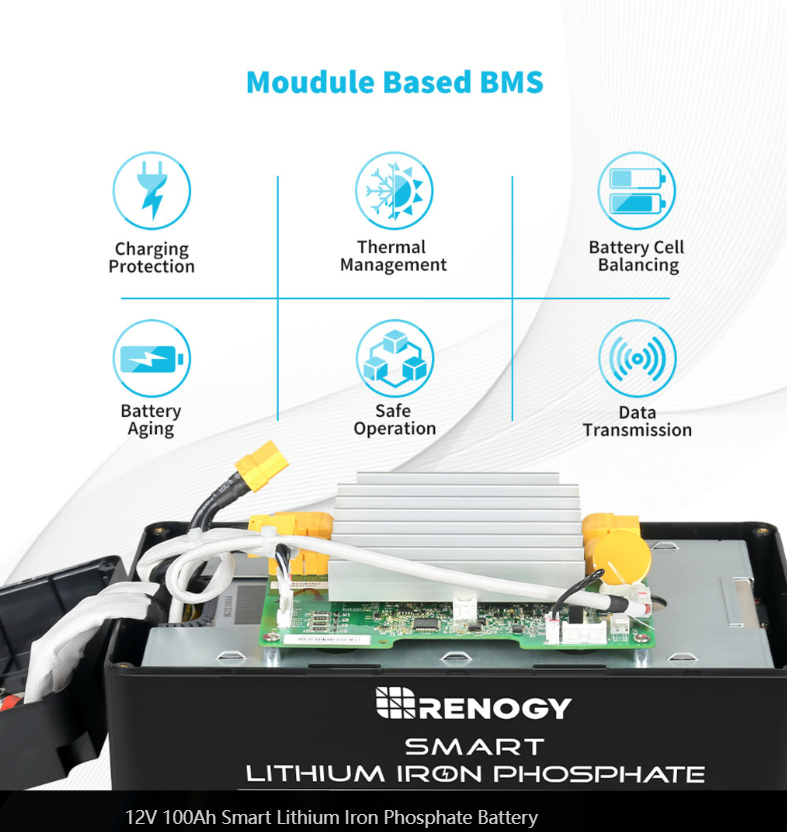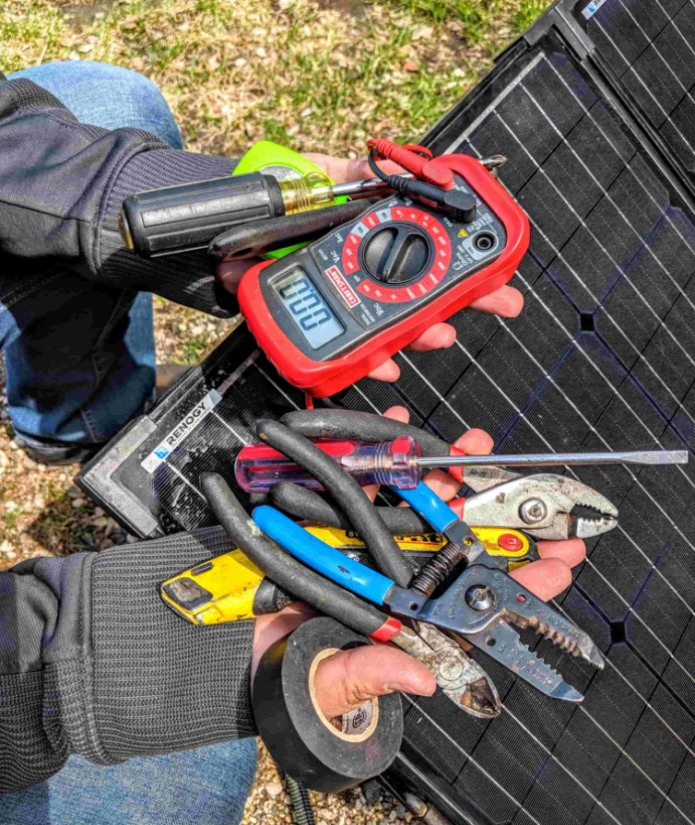Can you repair a battery by yourself
There are various videos circulating on the internet that explain how to repair a battery yourself. Although everything usually runs smoothly in the tutorials, repairing the battery yourself is extremely dangerous at any point – whether during the repair or several weeks afterwards. A dead battery only belongs in two places: Either in a specialized workshop or for disposal at a battery collection point.
The dangers of independent battery repairs and the causes of battery defects
An independent repair of a defective 12v lithium battery is only possible in one case: If the battery is deeply discharged. A battery can become deeply discharged if it is completely discharged or if it is exposed to temperatures that are too low. Regardless of the fact that a battery repair is possible for deeply discharged batteries, you should never carry this out yourself because:
- If the battery in your mobile phone, tool, e-bike, Segway, pedelec or other device is no longer recognized when charging, then the chemical structure of the battery has definitely been damaged.
- Carrying out a battery repair now using one of the methods described on the Internet would result in the cells becoming too charged and could explode during the battery repair.
- Even if the battery repair is successful, the problem of a damaged structure of the battery cells would not be solved. Even if the battery can be recharged after the repair, sooner or later it will leak in the respective device (e.g. mobile phone, e-bike, tool) and, in the worst case, lead to a fire.

In the following, we explain two causes of battery damage in order to then introduce you to preventive measures to prevent battery defects and extend the life of batteries.
Problem #1: Complete discharge during use
Modern batteries are protected against deep discharge. To ensure that the voltage of the cells does not fall below the end-of-discharge voltage, the devices switch off in good time. This is the case with modern smartphones, tablets and laptops, for example:
- Perhaps you have already observed how your smartphone, tablet or laptop switched itself off due to a low battery level.
- In such cases it is quite possible to switch the device on again and it will be usable for a short time despite the low battery level.
- However, the energy used can draw so much energy from the battery in the smartphone, tablet or laptop that the voltage is less than the minimum end-of-discharge voltage.
- The consequence of such a low voltage is damage to the cell chemistry within the battery.
- The battery of the smartphone, tablet or laptop can no longer be charged with the trickle charger because it is not recognized.
The same applies to batteries in devices other than smartphones, tablets and laptops: The battery pack in the e-bike can be deeply discharged, and the cordless screwdriver can also be affected.
Problem #2: Exposure to cold
The harmful effects of too low temperatures on accumulators are quickly explained: cold reduces particle movement. Just as the tea bag draws very slowly in cold water, the electrons in the battery also move at a much slower pace when it is cold. Be it tea or batteries: the universal laws of chemistry prevail here.
In detail, these laws, related to the battery, result in the internal resistance of the cells increasing and more power being consumed. The battery quickly loses capacity and the voltage also drops. As a rule, the batteries switch themselves off to protect themselves so that deep discharge does not occur. However, if the battery is used continuously in cold temperatures or the battery remains permanently in the cold, deep discharge cannot be prevented.
But when can one speak of temperatures that are too low? This varies with each battery type. Lithium-ion batteries (Li-ion batteries) have a different sensitivity to cold than, for example, nickel-cadmium batteries (NiCd batteries). While the agm rv battery has an unusually good behavior at low temperatures (up to -40 °C, 50% of its room temperature capacity is retained; note), the Li-Ion battery, which is the most widely used today, is significantly more sensitive.

Advice on conserving batteries and extending their lifespan
The two scenarios described, which lead to total discharge, tell you an important aspect that helps to protect the battery and avoid causes of defects: Definitely keep to the ambient temperatures recommended for your battery.
The following temperature ranges should be observed for the Li-Ion battery installed in mobile phones, smartphones, tablets, laptops, e-bikes, e-cars, Segways, often also in tools and many other devices:
- When charging, an ambient temperature of 15 to 30 °C.
- For long-term storage without use, an ambient temperature of 5 to 10 °C.
- Ambient temperatures of -10 to 55 °C can only be tolerated for a short time and during operation.
Above 30 °C during the charging process and above 55 °C during operation, overcharging is encouraged. In the event of overcharging, there is an immediate acute risk of fire, while deep discharge is only acutely dangerous when attempting to repair the battery afterwards.
- In addition, lithium phosphate batteries that are deformed or mechanically damaged should be thrown away immediately – not with household waste, of course, but at a battery collection point that you can find in every shop that sells rechargeable batteries and batteries.
- Since, in addition to over-discharging and deep-discharging, battery damage can also occur as a result of charging errors, you should try not to discharge your battery more than 20% too often during use and charge it more than 80% as rarely as possible when charging. This protects the electrodes, of which each battery cell has two.
- Have you ever heard of repairing the battery using an app? Battery repair apps are nothing more than applications for smartphones, tablets and laptops that help you to increase the longevity and performance of your battery. Repairing a defective battery with an app, on the other hand, is impossible. Enjoy using the applications to manage your battery properly, but the apps are not suitable for repairs.
How can a specialized workshop help with the repair of batteries for e-bikes, mobile phones and the like?
You can have the battery repaired in a specialized workshop, whereby it is important to point out: Even in workshops, deeply discharged, overcharged or mechanically damaged cells are by no means made fit. Batteries with such defects are also disposed of in workshops.
Battery repairs in workshops instead include a precise analysis of the battery performance. If you make use of the battery repair service, a detailed analysis will be carried out on your battery to see how its performance and capacity can be optimized again. After the analysis, there are three options:
- You have a battery pack, as is the case with e-cars, segways, e-bikes or any other device that requires a lot of power. If only one battery in the battery pack is defective, this battery is replaced and you save because you don’t have to buy a completely new battery pack.
- The device you are using has a battery that is not completely defective. It is possible that only one cell in the battery is affected. In this case, a cell exchange is carried out in your battery, which means that you avoid buying a new battery and also save.
- Your battery or battery pack is completely damaged. In this case, the service does not repair the battery, but replaces the battery. You can also carry out this battery replacement yourself without any danger – whether on an e-bike, on a mobile phone, on a cordless screwdriver or on another device.
Experience shows that the advantages of battery repairs in specialized workshops or with another professional are limited. It often turns out that a single cell replacement is not effective or that a complete replacement of the battery is necessary. Therefore, if you want to save yourself time, it is best if you do without a battery repair and simply buy a new battery for your mobile phone, e-bike, model car or other device. You will find a large selection of battery packs and individual batteries from leading manufacturers on our site: from Samsung to Panasonic, Ansmann and Efest to models from KEEPPOWER and Renogy – just to name a few.
FAQ: Battery repair – the most important information in brief
Can a battery be repaired?
In the event of mechanical damage to the case, over- or deep discharge, or chemical leakage from the case, it is not possible or wise to repair a battery under any circumstances. In these cases, even workshops do nothing other than replace the cells or completely replace the accumulator without repairing the damaged parts. It is practically possible to repair a battery in the event of deep discharge, but fires can occur when the battery is repaired or when the battery is used in the device afterwards.
How can I revive a battery?
In order to repair the battery for a laptop, cordless screwdriver or e-bike, some people resort to “revival”. Here you charge the deeply discharged battery with an intact battery by connecting both batteries to the two positive poles and then to the negative poles. After 15-30 seconds of charging, the previously deeply discharged battery should have sufficient voltage to be charged in the actual charger. – Caution: We strongly advise against this repair procedure as it is very dangerous!
Can lithium batteries be repaired?
lithium battery 12v is often used in our lives. If your lithium battery is damaged, would you consider repairing it yourself? Repairing an Ion battery is not recommended. Even specialized companies usually carry out an exchange of the energy storage and refer to this as a battery repair. Repairing the lithium-ion battery and not replacing it will lead to fire hazards in the short or long term, since the damaged cell structure within the energy storage device remains damaged during the resuscitation process and is additionally stressed following the repair.

How much does a battery repair cost?
You can have the battery repaired by a professional, but you have to reckon with costs of between 20 and 50 euros. These costs often exceed the prices of completely new accumulators. So if you are toying with the idea of repairing the battery for an e-bike, cordless screwdriver or laptop, you should consider whether it might not be more economical not to have the battery repaired by a workshop. Instead, you can perform a battery swap. You will definitely find the right new battery from one of the leading manufacturers on our site.


